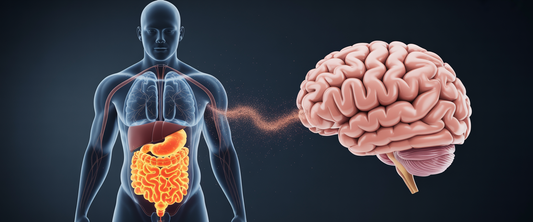6 evidence-based longevity strategies that actually work

The wellness industry generates billions in revenue annually, yet most interventions marketed as "biohacking" lack meaningful scientific validation. After years of testing cutting-edge protocols and interviewing leading researchers, a clear pattern emerges: the most transformative longevity strategies aren't found in expensive gadgets or exotic supplements, but in evidence-based practices that optimize our most critical systems.
True longevity biohacking requires distinguishing between marketing noise and measurable interventions. While the promise of revolutionary breakthroughs captures attention, the reality is more nuanced. Research consistently shows that a small fraction of available interventions deliver genuine, measurable benefits for cognitive function, physical resilience, and healthy aging. The key lies in understanding which practices have robust scientific backing and how to implement them systematically for optimal results.
6 Evidence-Based Longevity Biohacking Strategies That Actually Work
1. Prioritize Cardiovascular Health for Cognitive Protection
The brain-heart connection represents one of the most powerful relationships in longevity science. As neuroscientist Professor George Paxinos explains, "Whatever is good for the heart is good for the brain." This principle reflects the intimate relationship between cardiovascular health and cognitive function, supported by decades of research showing that heart-healthy practices may help support neuroprotection.
Implementation approach: Focus on activities that strengthen cardiovascular health: regular aerobic exercise (150 minutes moderate intensity weekly), resistance training 2-3 times per week, and maintaining healthy blood pressure through lifestyle modifications. Research suggests that individuals who maintain good cardiovascular health throughout midlife demonstrate better cognitive performance and reduced risk of cognitive decline in later years.
Scientific rationale: Cardiovascular exercise increases blood flow to the brain, supports neuroplasticity, and may help promote the production of brain-derived neurotrophic factor (BDNF), a protein associated with cognitive function and memory formation.
2. Cultivate Mental and Physical Flexibility
Behavioral therapist Marisa Peer reframes aging through the lens of adaptability: "Flexibility is youth. A flexible mind, a flexible body, a flexible attitude." This perspective highlights how maintaining adaptability across multiple domains may help support healthy aging and cognitive resilience.
Implementation approach: Incorporate daily practices that challenge both mental and physical flexibility. This includes learning new skills, practicing different movement patterns, and consciously adapting routines. Try activities like yoga, tai chi, or dance that combine physical flexibility with cognitive engagement. Additionally, seek out new experiences that require mental adaptation, such as learning a language or exploring unfamiliar environments.
Scientific rationale: Studies indicate that individuals who maintain cognitive flexibility demonstrate better problem-solving abilities and may be more resilient to age-related cognitive changes. Physical flexibility supports mobility and independence, while mental flexibility is associated with stress resilience and emotional well-being.
3. Embrace Novelty and Cognitive Challenge
Novelty, curiosity, and intellectual challenge aren't lifestyle luxuries but essential components of brain health optimization. Research consistently shows that engaging in new, complex activities may help support cognitive function and potentially contribute to cognitive reserve—the brain's ability to maintain function despite age-related changes.
Implementation approach: Regularly introduce novel experiences that require learning and adaptation. This might include taking up new hobbies, traveling to unfamiliar places, engaging with different cultures, or learning complex skills like musical instruments or new languages. The key is choosing activities that are genuinely challenging and require sustained mental engagement.
Scientific rationale: Novel experiences stimulate neuroplasticity and may help promote the formation of new neural connections. Studies suggest that individuals who regularly engage in cognitively challenging activities demonstrate better cognitive performance and may have reduced risk of cognitive decline compared to those with less mentally stimulating lifestyles.
4. Strengthen Social Connections for Neuroprotection
Social connection emerges as one of the most powerful neuroprotectors available, yet it's often overlooked in discussions of longevity biohacking. Research indicates that strong social relationships are associated with better cognitive function, reduced inflammation, and improved overall health outcomes throughout the aging process.
Implementation approach: Actively cultivate and maintain meaningful relationships across different life domains. This includes family connections, friendships, professional relationships, and community involvement. Consider joining groups aligned with your interests, volunteering for causes you care about, or participating in regular social activities that provide consistent interpersonal engagement.
Scientific rationale: Social isolation is associated with increased inflammation, elevated stress hormones, and cognitive decline. Conversely, strong social connections may help support healthy stress responses, provide cognitive stimulation through conversation and shared activities, and offer emotional support that contributes to overall well-being and resilience.
5. Adopt an Evidence-Based Approach to Interventions
The key to effective longevity biohacking lies in developing the ability to critically evaluate interventions based on scientific evidence rather than marketing claims. This requires understanding how to assess research quality, recognize potential conflicts of interest, and distinguish between correlation and causation in health studies.
Implementation approach: Before adopting new protocols, research the scientific evidence supporting their use. Look for peer-reviewed studies, understand study limitations, and consider whether results have been replicated by independent researchers. Consult with healthcare providers when considering significant changes, especially those involving supplements or medical interventions.
Scientific rationale: Many interventions marketed for longevity lack robust scientific validation or have been studied only in specific populations under controlled conditions. Developing critical evaluation skills helps ensure that time and resources are invested in practices with genuine potential for benefit while avoiding potentially harmful or ineffective interventions.
6. Focus on Preservation Rather Than Reversal
The most effective longevity strategies emphasize preserving existing function rather than attempting to reverse aging processes. This perspective shift from "anti-aging" to "healthy aging" aligns with current scientific understanding and may lead to more realistic and sustainable approaches to longevity optimization.
Implementation approach: Implement preventive strategies early and consistently rather than waiting for problems to develop. This includes maintaining healthy sleep patterns, managing stress effectively, eating a nutrient-dense diet, staying physically active, and addressing health issues promptly. Regular health monitoring and preventive care become increasingly important for early detection and intervention.
Scientific rationale: Research suggests that many age-related changes begin decades before they become clinically apparent. Early intervention and prevention strategies may be more effective than attempting to reverse established age-related changes. This approach also aligns with the concept that aging is a complex, multifactorial process that may be influenced but not necessarily reversed through current interventions.
Building Your Evidence-Based Longevity Strategy
Effective longevity biohacking requires patience, consistency, and a commitment to evidence-based practices over trendy interventions. The most transformative strategies often appear deceptively simple because they address fundamental biological processes rather than offering quick fixes or revolutionary breakthroughs.
Start by implementing one or two strategies consistently before adding additional interventions. This approach allows you to assess individual responses and build sustainable habits that support long-term health optimization. Remember that individual responses to longevity interventions can vary significantly based on genetics, current health status, and lifestyle factors.
The future of wellness lies not in chasing youth through unproven interventions, but in being informed enough to preserve health and function through evidence-based practices. Work with qualified healthcare providers to develop personalized approaches that align with your individual needs, health status, and goals for healthy aging.



